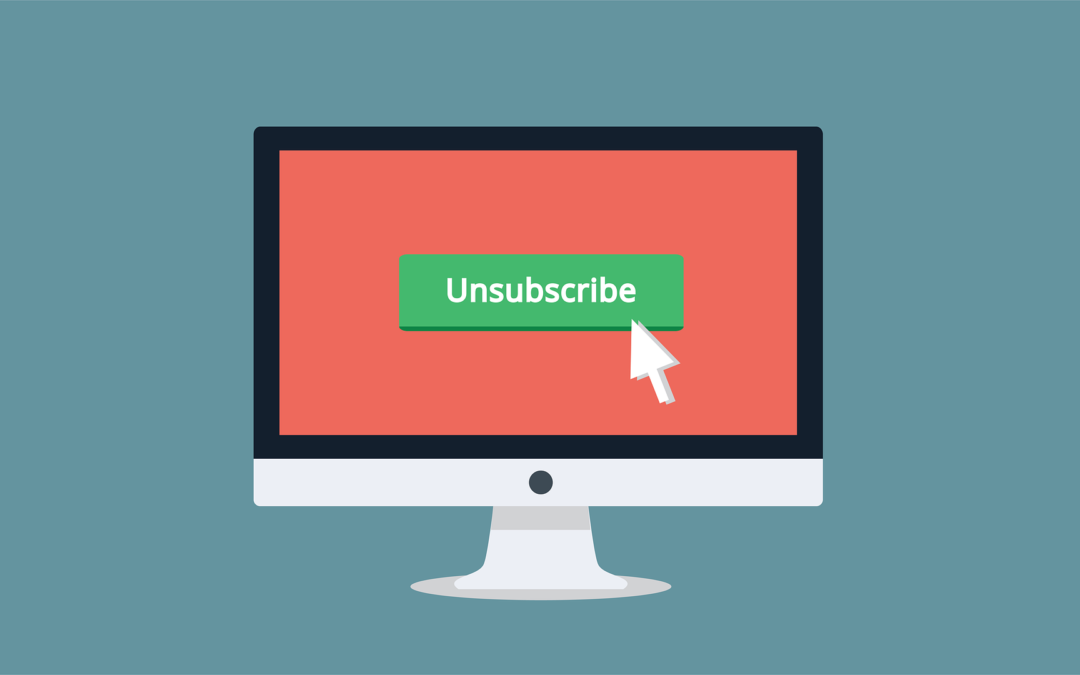As the need for additional income or program support increases, your organization may increase the number of outgoing emails. For most nonprofits, this will lead to an increase in users who unsubscribe from your email communication. No matter how much time you dedicate to crafting the perfect content, segmented audiences, and subject line – someone will opt out. This is the harsh reality of nonprofit emails.
How do you manage the individuals who unsubscribe?
After someone clicks unsubscribe in an email system, they are opting out of future email communication from that same system. Constant Contact, Vertical Responses, Blackbaud, and MyEmma all work to ensure that those audience members will not automatically receive messages in the future. What else can you do?
Tracking email opt-outs in your database is a time-consuming but valuable task. This helps you understand if there are certain types of audience members who are opting out of your content. Tracking this information is a useful data point to understand your email content better. While time is always a challenge, this is a great volunteer activity or something you can do while catching up on your favorite reality tv show.
How do you communicate with your users who unsubscribe?
For many organizations, the majority of individuals who unsubscribe are audience members that you do not have a personal relationship with. They are likely someone who signed up for an email or registered for an event in the distant past. There isn’t much you can do for these individuals.
But, many organizations also struggle with key audience members opting out of communication. This could be due to the number of emails they receive or because they went on an email clean-up binge. A former colleague had to deal with irate volunteer event chair who was upset that she was not receiving email messages. When told the exact date and email that she opted out with, the volunteer replied, “I didn’t realize that opting out of your emails meant I wouldn’t receive your emails.”
If you notice a key volunteer unsubscribed to your email, you can reach out to them personally. It’s imperative not to opt them back into email automatically. Pick up the phone or send a personal email and ask what caused them to choose to stop receiving your communication. If you position the conversation as they’re helping you make better decisions and write stronger communication, the volunteer will be more likely to share their feedback.
How do you prevent users unsubscribing from email communication?
We’ve discussed how to handle individuals who unsubscribe, but what steps can you take to prevent them from even happening?
Create options – If someone clicks on your unsubscribe link where do they go? Can you provide options for the audience member only receiving certain types of email content? Giving an email recipient space to self-select the content that is most relevant to them provides a final step to prevent them from opting out from your email communication entirely.
Types of emails – What are the kinds of emails you’re sending and how do the subscribe rates vary per email? Are you sending the same kind of email multiple times in a row? If you see much higher rates for advocacy-related email content, then it might make sense to better educate your supporters on how your advocacy work affects your organization’s mission. Another opportunity is to create a segment of users who want to receive advocacy updates.
Email frequency – What is the pace of your emails? Are you sending them too frequently? This is one of the biggest reasons for individuals who unsubscribe – if your audience receives too many messages that are not of interest to them it will lead to an increased unsubscription rate. It can be challenging to balance long-term goals with your short-term communication needs. A nonprofit organization we worked with wanted to send a “Registration closes in two days” email a few days after sending a “Registration closes in one week” email. It was important to balance the need for the organization to remind their procrastinators to sign up against a potential increased rate of individuals unsubscribing from their future communication. These are important questions to consider when mapping out your communication schedule.
Email segments – How are segmenting your email communication? Is content is going to the appropriate audience members? How can you make your email communication more specific and relevant to key audience groups? These are all questions to consider when developing email segments. Relevancy is a critical part of email communication and taking small steps to adjust content for critical audiences can have a significant impact on unsubscribe rates.
Photo Credit: Pixabay

Justin (he, him) is a Principal and Co-Founder of Social Change Consulting. He has over fifteen years of nonprofit experience, with expertise in online fundraising, digital communications, and data management. Justin helps organizations connect their communication strategy to their income development needs. When he’s not on the clock, Justin is exploring Berlin, running, listening to too many podcasts, and drinking too much coffee.
